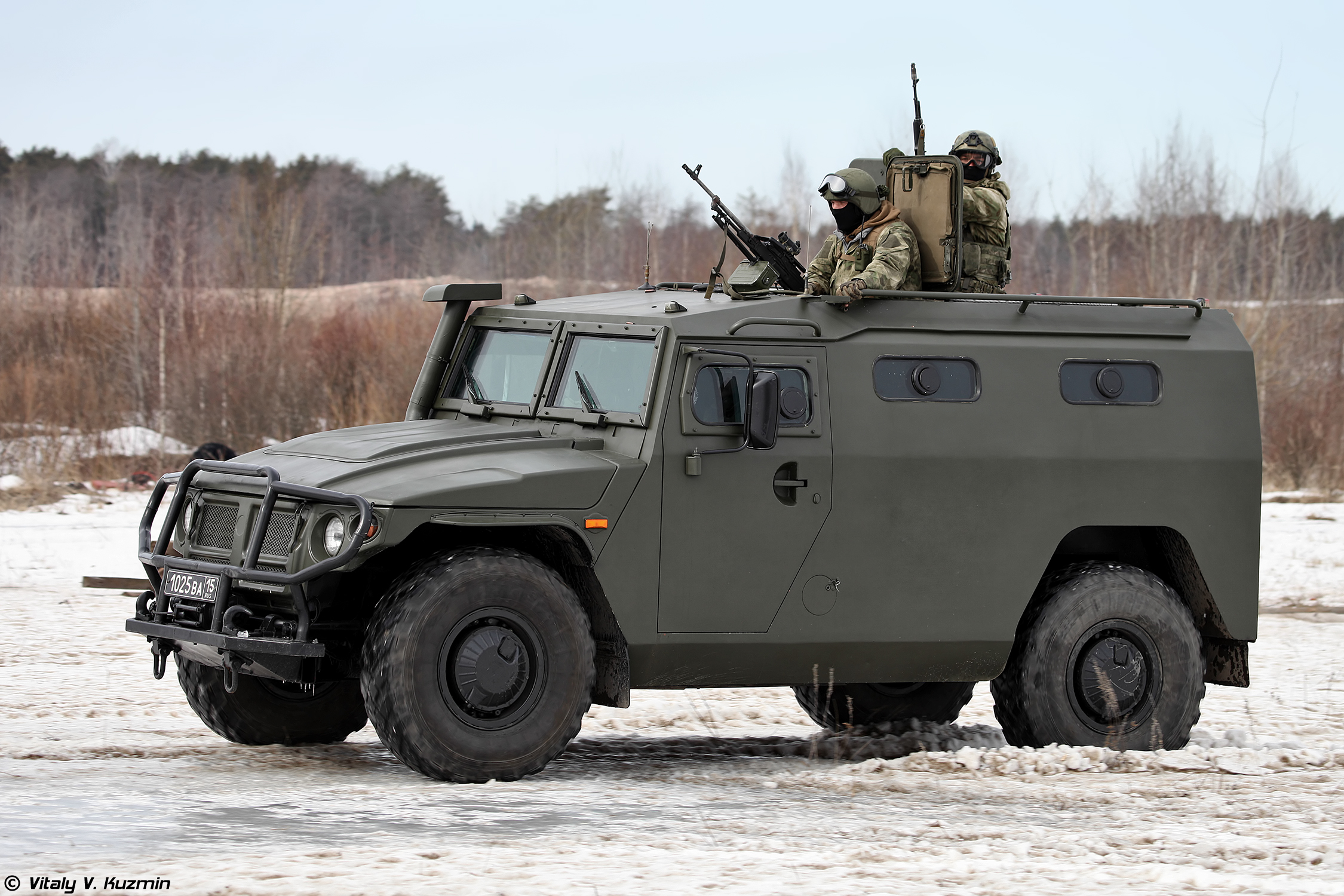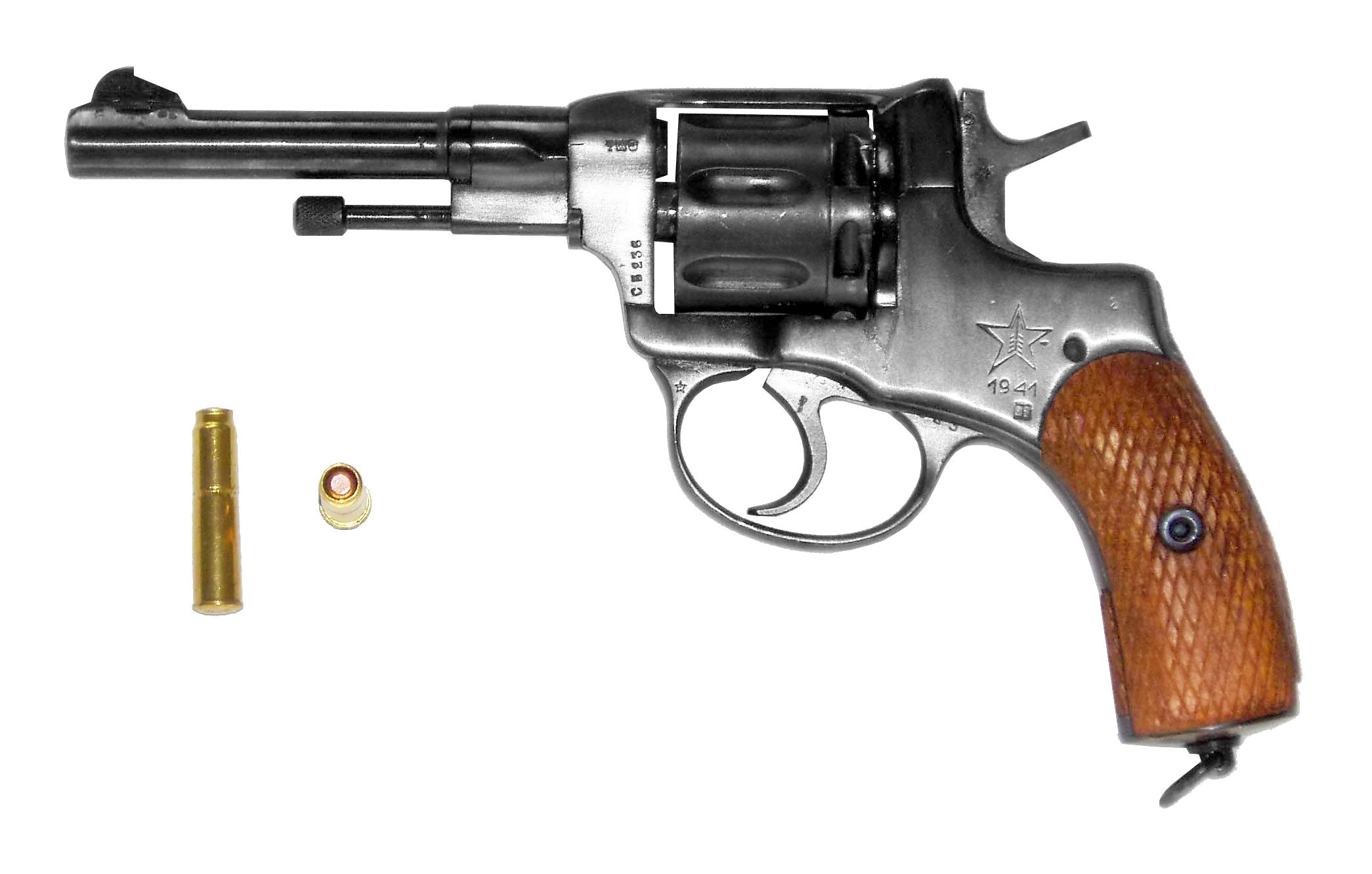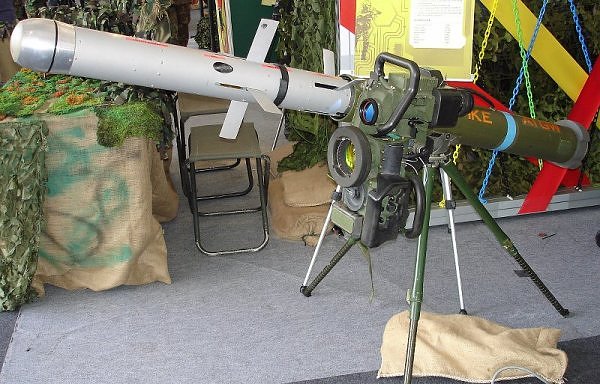|
Kornet-D
Kornet-D is a Russian anti-tank guided missile system platform based on the GAZ-2975. It employs 9M133M Kornet-M missiles in both tandem-HEAT or thermobaric warhead variants. It is capable of launching a salvo of two missiles less than a second apart, either at a single target or at two different targets simultaneously. The two-missile salvo is intended to either defeat active protection systems or to ensure a single tank's destruction in the absence of an active protection system. The Kornet-D is equipped with an automatic tracking system, which tracks and guides each missile to their assigned targets without an operator's aid. The operator may switch targets or override missile guidance during the missile's flight. However, the vehicle must track the target until the missile impacts and is not a fire and forget system. Armament The main and only armament on the Kornet-D are two 9M133M Kornet-EM quad-launchers. The launchers are both equipped with automatic tracking syst ... [...More Info...] [...Related Items...] OR: [Wikipedia] [Google] [Baidu] |
9M133 Kornet-EM
The 9M133M Kornet-M (also known by the export designation 9M133 Kornet-EM) Russian anti-tank guided missile (ATGM) is an improved version of the 9M133 Kornet ATGM, with increased range and an improved warhead. Kornet-EM missiles are chiefly used on the Kornet-D system. Kornet-M missiles are also compatible with standard Kornet man-portable tripod launchers. Design Introduced in 2012, its vehicle mounted version is equipped with an automatic target tracker. Instead of manually placing the crosshairs on target throughout the missiles flight, the operator designates a target once and the computer tracks the target as the missile travels towards it. The beam riding system also allows a vehicle equipped with twin launchers to attack two different targets at once, increasing its rate of fire, decreases the number of vehicles needed for a mission, and can defeat vehicles equipped with an active protection system through salvo fire at one target. The system's use of an autotracker can ma ... [...More Info...] [...Related Items...] OR: [Wikipedia] [Google] [Baidu] |
Tigr (Russian Military Vehicle)
The Tigr (russian: Тигр, lit=Tiger) is a Russian 4×4 multipurpose all-terrain infantry mobility vehicle manufactured by Military Industrial Company, first delivered to the Russian army in 2006. Primarily used by the Russian Armed Forces and Russian Ministry of Internal Affairs, it is also used by numerous other countries. History The Tigr was first shown at the IDEX exhibition in 2001. Pilot production started in 2004 with 96 vehicles. The Russian Army officially adopted the GAZ-2975 into service at the end of 2006. The vehicle was then officially manufactured in 2007. China co-produced the Tigr with Russia after it initially refused to grant them a full license. 110 Tigrs were delivered from 2008-2010 and are in service with the Chinese Public Security police. Some saw use publicly in the 2008 Beijing Olympics and in the 2009 Xinjiang riots. Five Tigrs, fully assembled, were delivered with five more in kit form for assembly while 100 were assembled in China und ... [...More Info...] [...Related Items...] OR: [Wikipedia] [Google] [Baidu] |
List Of Russian Weaponry
The following is a list of modern Russian small arms and light weapons which were in service in 2016: Handguns Revolvers Pistols Special purpose Submachine guns Special purpose Shotguns Rifles Bolt-action Semi-automatic Selective-fire Special purpose Anti-materiel rifles Machine guns Squad automatic weapons (SAWs) General-purpose Heavy Hand grenades Fragmentation Anti-tank Grenade launchers Stand-alone Attached Automatic grenade launchers Rocket launchers General purpose Incendiary and thermobaric Special purpose Recoilless rifles Mortars Anti-tank guided missiles Man-portable air defense system Landmines See also * List of equipment of the Russian Ground Forces * List of Russian weaponry makers References {{DEFAULTSORT:Russian small arms and light weapons Weapons of Russia Lists of weapons Weapons A weapon, arm or armament is any ... [...More Info...] [...Related Items...] OR: [Wikipedia] [Google] [Baidu] |
Anti-tank Guided Missile
An anti-tank guided missile (ATGM), anti-tank missile, anti-tank guided weapon (ATGW) or anti-armor guided weapon is a guided missile primarily designed to hit and destroy heavily armored military vehicles. ATGMs range in size from shoulder-launched weapons, which can be transported by a single soldier, to larger tripod-mounted weapons, which require a squad or team to transport and fire, to vehicle and aircraft mounted missile systems. Earlier man-portable anti-tank weapons like anti-tank rifles and magnetic anti-tank mines, generally had very short range, sometimes on the order of metres or tens of metres. Rocket-propelled high-explosive anti-tank (HEAT) systems appeared in World War II and extended range to the order of hundreds of metres, but accuracy was low and hitting targets at these ranges was largely a matter of luck. It was the combination of rocket propulsion and remote wire guidance that made the ATGM much more effective than these earlier weapons, and gave ... [...More Info...] [...Related Items...] OR: [Wikipedia] [Google] [Baidu] |
Anti-tank Guided Missiles
An anti-tank guided missile (ATGM), anti-tank missile, anti-tank guided weapon (ATGW) or anti-armor guided weapon is a guided missile primarily designed to hit and destroy heavily armored military vehicles. ATGMs range in size from shoulder-launched weapons, which can be transported by a single soldier, to larger tripod-mounted weapons, which require a squad or team to transport and fire, to vehicle and aircraft mounted missile systems. Earlier man-portable anti-tank weapons like anti-tank rifles and magnetic anti-tank mines, generally had very short range, sometimes on the order of metres or tens of metres. Rocket-propelled high-explosive anti-tank (HEAT) systems appeared in World War II and extended range to the order of hundreds of metres, but accuracy was low and hitting targets at these ranges was largely a matter of luck. It was the combination of rocket propulsion and remote wire guidance that made the ATGM much more effective than these earlier weapons, and gave light ... [...More Info...] [...Related Items...] OR: [Wikipedia] [Google] [Baidu] |
Anti-tank Guided Missile
An anti-tank guided missile (ATGM), anti-tank missile, anti-tank guided weapon (ATGW) or anti-armor guided weapon is a guided missile primarily designed to hit and destroy heavily armored military vehicles. ATGMs range in size from shoulder-launched weapons, which can be transported by a single soldier, to larger tripod-mounted weapons, which require a squad or team to transport and fire, to vehicle and aircraft mounted missile systems. Earlier man-portable anti-tank weapons like anti-tank rifles and magnetic anti-tank mines, generally had very short range, sometimes on the order of metres or tens of metres. Rocket-propelled high-explosive anti-tank (HEAT) systems appeared in World War II and extended range to the order of hundreds of metres, but accuracy was low and hitting targets at these ranges was largely a matter of luck. It was the combination of rocket propulsion and remote wire guidance that made the ATGM much more effective than these earlier weapons, and gave ... [...More Info...] [...Related Items...] OR: [Wikipedia] [Google] [Baidu] |
Tandem-charge
A tandem-charge or dual-charge weapon is an explosive device or projectile that has two or more stages of detonation, assisting it to penetrate either reactive armour on an armoured vehicle or strong structures. Anti-tank Tandem charges are effective against reactive armour, which is designed to protect an armoured vehicle (mostly tanks) against anti-tank munitions. The first stage of the weapon is typically a weak charge that either pierces the reactive armour of the target without detonating it, leaving a channel through the reactive armour so that the second warhead may pass unimpeded, or simply detonates the armour, causing the timing of the counter-explosion to fail. The second detonation from the same projectile (which defines it as a tandem charge) attacks the same location as the first detonation where the reactive armour has been compromised. Since the regular armour plating is often the only defence remaining, the main charge (second detonation) has an increased likel ... [...More Info...] [...Related Items...] OR: [Wikipedia] [Google] [Baidu] |
Thermobaric Weapon
A thermobaric weapon, also called an aerosol bomb, a vacuum bomb or a fuel air explosive (FAE), is a type of explosive that uses oxygen from the surrounding air to generate a high-temperature explosion. The fuel–air explosive is one of the best-known types of thermobaric weapons. Thermobaric weapons are almost 100% fuel and as a result are significantly more energetic than conventional explosives of equal weight. Many types of thermobaric weapons can be fitted to hand-held launchers, and can also be launched from airplanes. The largest Russian bomb contains a charge of approximately 7 tons of a liquid fuel that when detonated creates an explosion of 39.9 tons TNT equivalent. Terminology The term ''thermobaric'' is derived from the Greek words for 'heat' and 'pressure': ''thermobarikos'' (θερμοβαρικός), from ''thermos'' (θερμός) 'hot' + ''baros'' (βάρος) 'weight, pressure' + suffix ''-ikos'' (-ικός) '-ic'. Other terms used for the family of weapon ... [...More Info...] [...Related Items...] OR: [Wikipedia] [Google] [Baidu] |
Salvo
A salvo is the simultaneous discharge of artillery or firearms including the firing of guns either to hit a target or to perform a salute. As a tactic in warfare, the intent is to cripple an enemy in one blow and prevent them from fighting back. Overview Troops armed with muzzleloaders required time to refill their arms with gunpowder and shot. Gun drills were designed to enable an almost continuous rain of fire on the enemy by lining troops into ranks, allowing one rank to fire a salvo, or volley, while the other ranks prepared their guns for firing. The term is commonly used to describe the firing of broadsides by warships, especially battleships. During fleet engagements in the days of sail, from 17th century until the 19th century, ships of the line were maneuvered with the objective of bringing the greatest possible number of cannon to bear on the enemy and to discharge them in a salvo, causing enough damage and confusion as to allow time for the cannon to be swabb ... [...More Info...] [...Related Items...] OR: [Wikipedia] [Google] [Baidu] |
Rolled Homogeneous Armor
Rolled homogeneous armour (RHA) is a type of vehicle armour made of a single steel composition hot-rolled to improve its material characteristics, as opposed to layered or cemented armour. Its first common application was in tanks. After World War II, it began to fall out of use on main battle tanks and other armoured fighting vehicles intended to see front-line combat as new anti-tank weapon technologies were developed which were capable of relatively easily penetrating rolled homogeneous armour plating even of significant thickness. Today, the term is primarily used as a unit of measurement of the protection offered by armour on a vehicle (often composed of materials that may not actually contain steel, or even contain any metals) in equivalent ''millimetres of RHA'', referring to the thickness of RHA that would provide the same protection. Typically, modern composite armour can provide the same amount of protection with much thinner and lighter construction than its protective ... [...More Info...] [...Related Items...] OR: [Wikipedia] [Google] [Baidu] |
Explosive Reactive Armor
Reactive armour is a type of vehicle armour that reacts in some way to the impact of a weapon to reduce the damage done to the vehicle being protected. It is most effective in protecting against shaped charges and specially hardened kinetic energy penetrators. The most common type is ''explosive reactive armour'' (ERA), but variants include ''self-limiting explosive reactive armour'' (SLERA), ''non-energetic reactive armour'' (NERA), '' non-explosive reactive armour'' (NxRA), and electric armour. NERA and NxRA modules can withstand multiple hits, unlike ERA and SLERA. A second hit in exactly the same location may potentially penetrate any of those, as the armour in that spot is compromised. Reactive armour is intended to counteract anti-tank munitions that work by piercing the armour and then either kill the crew inside, disable vital mechanical systems, or create spalling that disables the crew — or all three. Reactive armour can be defeated with multiple hits in the same pl ... [...More Info...] [...Related Items...] OR: [Wikipedia] [Google] [Baidu] |




_sunk_as_target_with_FAE_1972.jpg)

